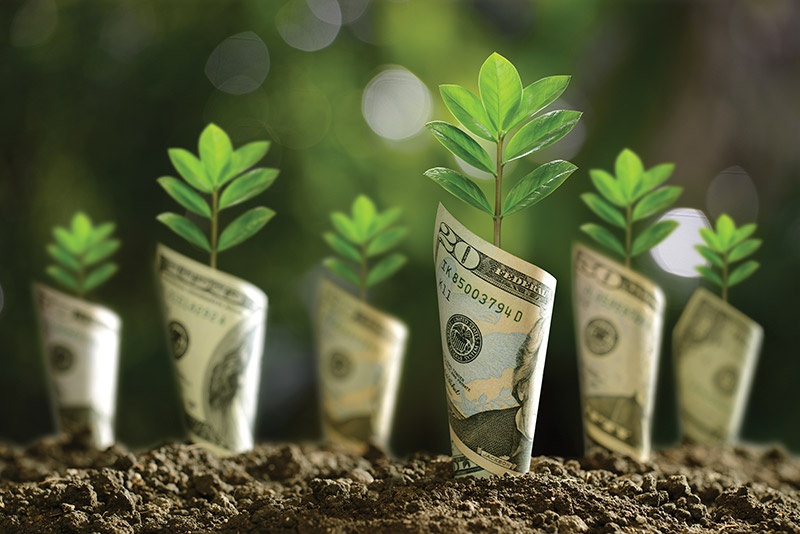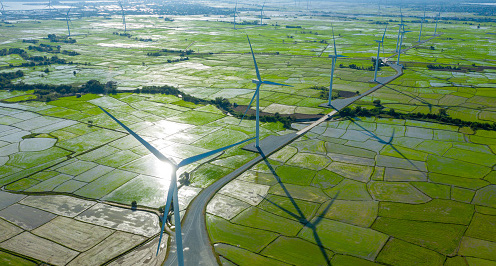Given the current status, a novel public development bank or energy-focused financial vehicle could support Vietnam to realise its goal of transitioning to a low-carbon, climate-resilient economy in an equitable manner.
McKinsey and Company on August 3 released the report “Can Vietnamese banks seize the green bond opportunity?”, which analyses the preconditions leading to the growth of green-bond markets and urges Vietnamese banks to take timely action to reap the rewards from this segment.

The report indicates that the demand for financing of projects with environmental benefits in Vietnam has grown year by year, totalling more than $10 billion annually from 2018 to 2020 and $21 billion in 2021. This increase is forecasted to continue, based on market momentum, Vietnam’s latest draft of Power Development Plan VIII, and the country’s net-zero commitments.
Finance-wise, McKinsey estimates that issuing bonds for environmental, social, and governance (ESG) projects may bring Vietnam’s financial institutions roughly $1.7 billion in revenue by 2025, with $1.5 billion coming from transition finance and green bonds.
In terms of a legal framework, the government has assigned the State Bank of Vietnam to advance green financing instruments and proclaimed that all banks must adopt internal measures to evaluate environmental risks by 2025. Most recently, in the National Strategy for Climate Change which came into effect last month, one of the focuses was to create a favourable investment environment to respond to climate change and attract green financial flows.
Meanwhile, Vietnamese commercial banks are still in the early stages of developing green-bond products and projects, with only $216 million issued in green bonds in the past five years. Despite the fact that investors are looking for investment opportunities and ESG projects are in need of funding, “the number of green financial instruments and the level of sophistication is low,” the report assessed.
Nonetheless, Vietnamese banks still have a chance to take a decisive stance in the green bond market, by moving quickly to grasp upcoming opportunities. The reports outlined several steps financial institutions can take to achieve best practices, which include considering all the potential ESG business opportunities, realigning portfolios, reviewing overall risk management processes and credit operating model, and highlighting the bank’s green commitment to business reporting.
Aside from McKinsey, the general consensus amongst experts is that in order to enable the sustainability pathway, the banking and finance sector will require major revolutionisation.
“There’s no doubt that, if Vietnam is to achieve its ambitious decarbonisation path, its finance sector will play a significant role in providing climate finance and institutions must also go on their own carbon transition journey,” said Duong Nguyen, chairwoman of EY Vietnam Consulting.
“In the next 12 months, we expect new financial instruments designed to accelerate climate transition to emerge at pace. Rather than waiting for detailed guidance around asset reallocation, institutions should forge ahead and get ready for the green finance agenda that is certain to come,” Nguyen said.
To this day, domestic banks in Vietnam have been the primary source of financing for solar and wind power projects. Between 2018 and 2020, these banks roughly contributed a total of $3.6 billion in investment, according to the United Nations Development Programme.
It also forecast that the ongoing growth of solar and offshore wind energy, as well as the development of regional micro-grids and electricity storage, would need an additional $33 billion over the next 10 years.
Meanwhile, Uli Volz, professor of Economics at SOAS University of London, stated limitations of private finance for green development, particularly from commercial banks, are significant, such as lack of long-term credit, scarce and expensive lending to smaller and newer innovative companies. Furthermore, privately-held financial institutions might be hesitant to fund activities with great uncertain returns and positive externalities.
“Meanwhile, public development banks can leverage private capital through bond issuances and strengthen domestic resource mobilisation,” Prof. Volz noted at a VIR conference in late July. “Therefore, we believe a new public development bank with a focused policy mandate can support Vietnam achieve a just transition to a climate-resilient economy.”
By Linh Le
Please view the original article here:
https://vir.com.vn/new-finance-instruments-in-play-for-climate-future-95517.html



